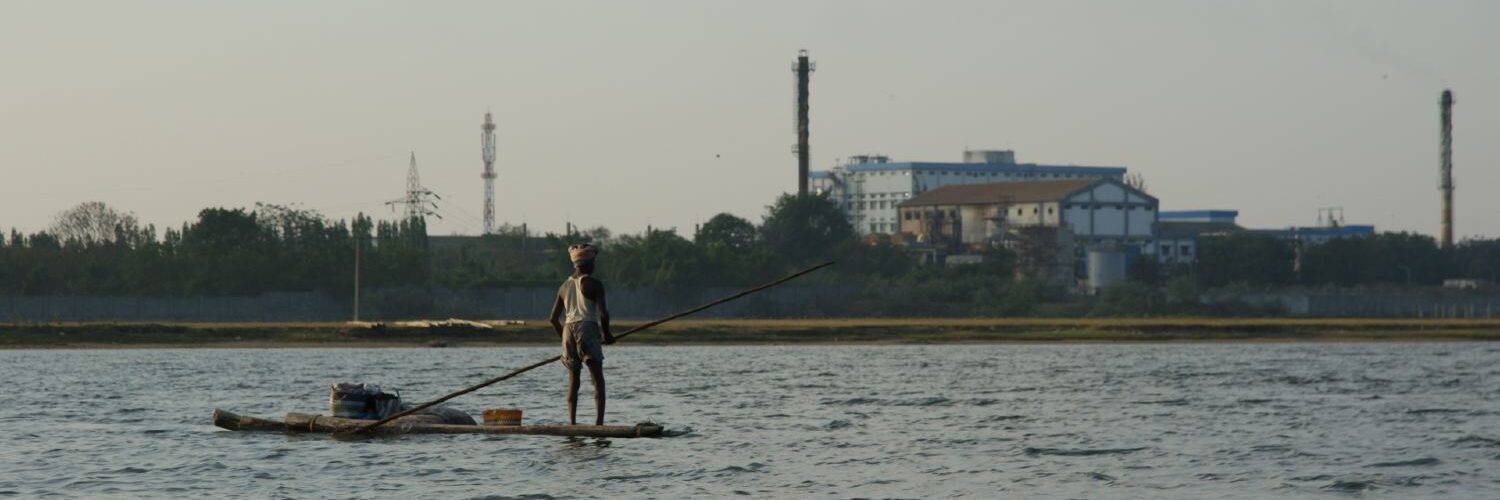Cuddalore, 27 February, 2006 — Inland fisherfolk who fish in the River Uppanar are reporting a marked increase in river pollution over the last 6 months. “We have been noticing an increase in various kinds of diseases afflicting the fish. Things had improved after the 2002 Pioneer incident, and particularly after the first Local Area Committee was formed under Mr. Mohan. Industries were scared then, and incidents were few and far between. Ever since the LAEC was reconstituted, industries have begun to feel that they can get away with anything,” says S. Pugazhenthi, an inland fisherman and SIPCOT Area Monitor. In September 2002, a massive discharge of acidic effluents into the River allegedly by Pioneer prevented fishermen from entering the river for over a month. Those who did suffered serious burn injuries that didn’t heal quickly.
This morning, Pugazhenthi and his fishing partner returned home by 4 a.m., cutting short their fishing time by several hours, after suffering from intense itching upon entering the water. They entered the River near Sangolikuppam.
According to security personnel in the industries who spoke to the monitors on condition of anonymity, SIPCOT industries routinely discharge effluents directly into the river using pumpsets and hose-pipes that can be removed after the operation. Hotspots include the area behind Pioneer, Arkema Peroxides and TANFAC.
According to fisherfolk, only bottom-dwelling fish are showing signs of disease. “That’s because the sludge is seriously contaminated,” says Pugazhenthi.
The kinds of abnormalities in fish reported by fishermen regularly include:
- Skin disease: Open sores on the skin, particularly of the Madavai fish. The fish can grow to a maximum of 1.5 feet or 18 inches. Fishermen say that these fish cannot be sold because it is disgusting to look at, and consumers are likely to be turned off by the sores.
- Stone-like formation in throat: Noticed in fishes such as Seththa Kendai and Madavai, these stone-like formations are naturally found in marine fish such as the Vaalai. When crushed, the stones crumble into a calcareous (limestone-like) substance akin to coral pieces, the fisherfolk say.
- Eyes: Many fish are being found with tiny lesions (like pin-heads) above the eyes.
- Tail: Tail deformities have also been reported, although less frequently.
Such observations by fisherfolk are routinely ignored by regulators and special scientific committees, because such professionals, and particularly scientists, because they come from ordinary people, many of whom are illiterate. The Supreme Court Monitoring Committee on Hazardous Wastes, for instance, prides in being a scientific body, so much so that it unquestioningly excludes local communities and workers from environmental decision-making because the latter are deemed to be unqualified. The Community Environmental Monitoring program aims to bring common sense back into science by articulating observations by lay people in a language that even scientists can understand.
